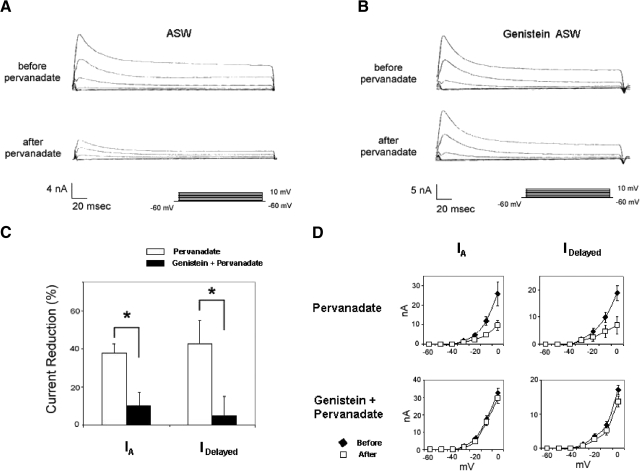Fig. 11.
Pervanadate ionophoresis suppresses K+ currents in type B photoreceptors. A, top traces: family of transient (IA) and delayed (IDelayed) components of K+ current in a type B photoreceptor, elicited by depolarization to indicated membrane potentials (bottom), before ionophoresis of pervanadate ion. Bottom traces: currents recorded from the same cell 10 min after ionophoresis of pervanadate ion. Pervanadate suppressed both IA and IDelayed at all potentials tested. B: pervanadate's inhibition of K+ currents was blocked by 100 μM genistein. K+ currents before (top traces) and 10 min after (bottom) pervanadate ionophoresis in the presence of genistein. C: summary data for suppression of K+ currents resulting from pervanadate ionophoresis (n = 7) or pervanadate ionophoresis in the presence of genistein (n = 3). Pervanadate ionophoresis suppressed the K+ currents, but not if genistein was present in the bath. Currents measured at 0 mV. D: summary data depicting the effects of pervanadate (n = 7) or the combination of pervanadate and genistein (n = 3) on K+ currents, at all voltages, measured about 10–12 min after ionophoresis of pervanadate. Both the transient (IA) and sustained (IDelayed) components of K+ current were decreased by pervanadate (top), although genistein blocked the suppressive effects of pervanadate on both components of K+ current (bottom).

